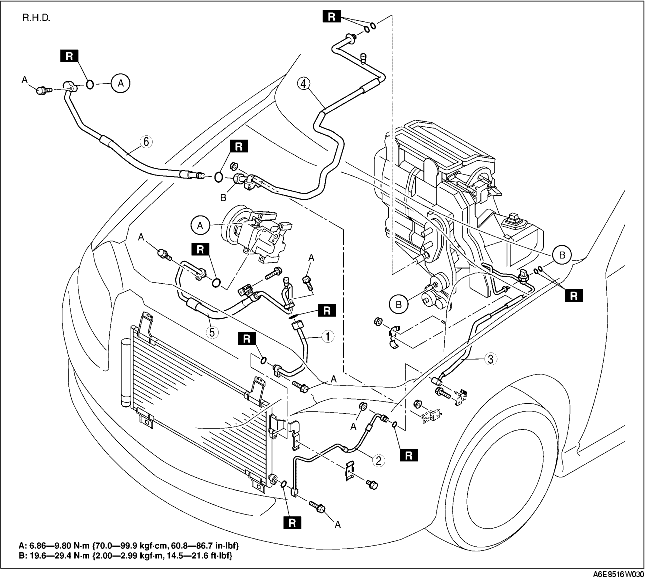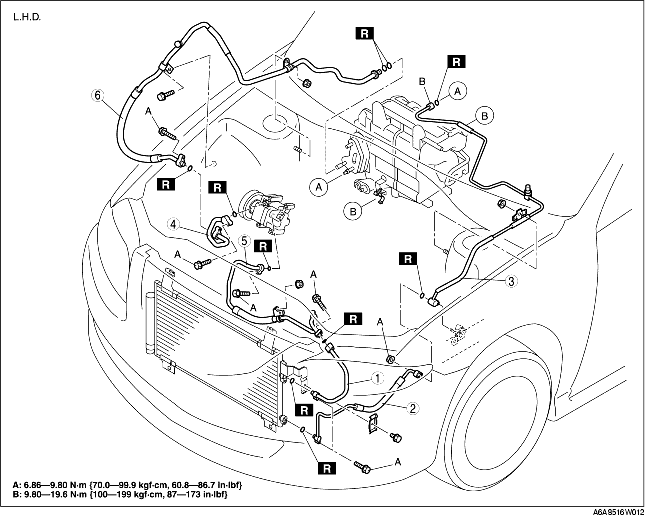
1. Remove the battery.
2. Discharge the refrigerant from the system. (See RECOVERY.) (See CHARGING.)
3. Remove the washer tank. (L.H.D. only) (See WASHER TANK REMOVAL/INSTALLATION.)
4. Remove the air cleaner cover, air cleaner element and air cleaner case. (See INTAKE-AIR SYSTEM REMOVAL/INSTALLATION [LF, L3].)
5. Remove the charcoal canister.
6. Remove the No.3 engine mount. (L.H.D. only)
7. Remove the shroud panel. (See SHROUD PANEL REMOVAL/INSTALLATION.)
8. Remove the right splash shield.
9. Remove the right mud guard. (L.H.D. only)
10. Remove in the order indicated in the table. Do not allow compressor oil to spill.
11. Install in the reverse order of removal.
12. Perform the refrigerant system performance test. (See REFRIGERANT SYSTEM PERFORMANCE TEST.)


|
1
|
Cooler pipe No.1
|
|
2
|
Cooler pipe No.2
|
|
3
|
Cooler pipe No.3
|
|
4
|
Cooler pipe No.4
|
|
5
|
Cooler hose (HI)
|
|
6
|
Cooler hose (LO)
|
1. Loosen the nut using two spanners, then remove the cooler pipe or hose.
1. Disconnect the block joint type pipes by grasping the female side of the block with pliers or similar tool and holding firmly, then remove the connection bolt or nut.
1. Set the SST.
2. While looking through the inspection hole of the SST, insert the protruding part of the SST until it makes contact with the cage section.
3. Use the SST to disconnect the male pipe or hose from the female by pulling the male pipe or hose.
1. When installing a new cooler pipe No.4 or cooler hose (LO), add a supplemental amount of ATMOS GU10 compressor oil into the refrigeration cycle.
2. Apply compressor oil to the O-rings and connect the joints.
3. Tighten the joints.
1. Tighten the nut or bolt of joint by hand.
2. Tighten the joint to the specified torque. If it is a nut joint, tighten the nut with a spanner and torque wrench.
3. Connect the block joint type pipes by grasping the female side of the block with pliers or similar tool and holding firmly, then tighten the connection bolt or nut with a torque wrench.
1. Connect the male pipe or hose by twisting it onto female pipe until the garter spring of the male pipe or hose is over the flared end of the female pipe.